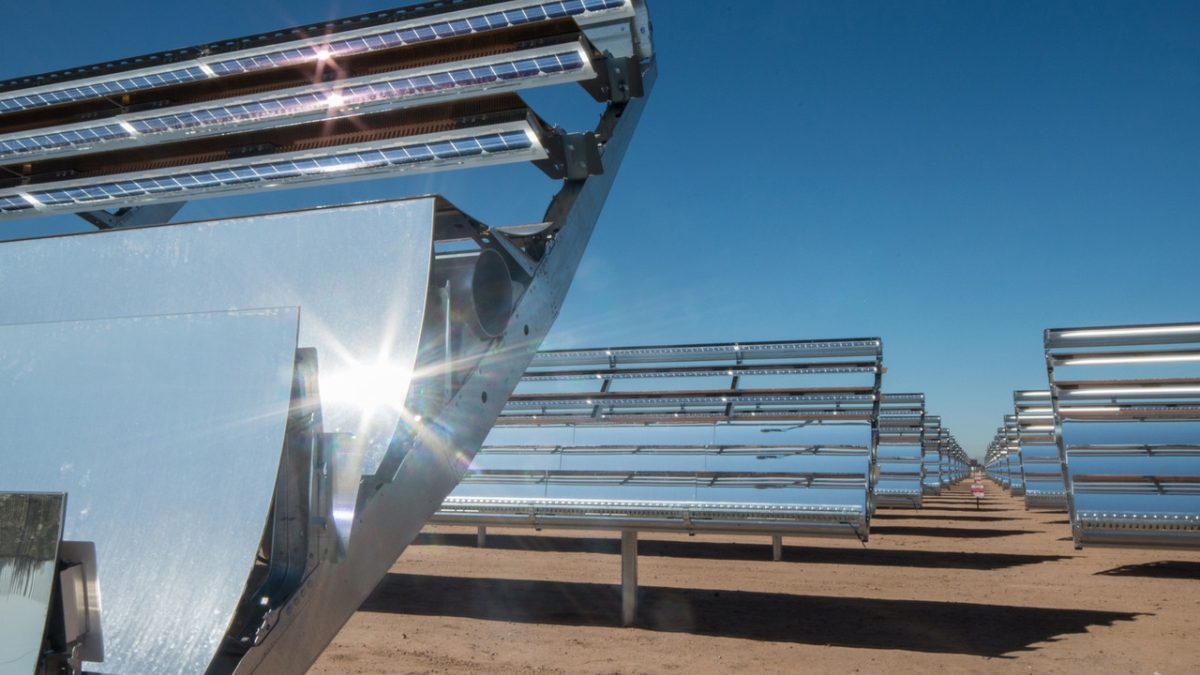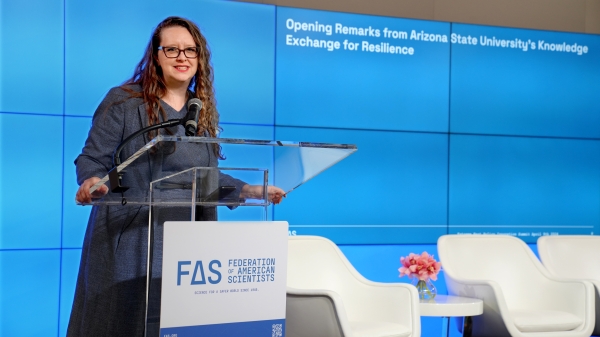Powering up
ASU a partner in Red Rock solar power plant, one of the largest in Arizona, furthering the university’s role as a leader in sustainability

Construction workers this month are starting to turn several hundred acres of scrub desert near Red Rock, Arizona, into what will be gleaming fields of solar panels, one of the largest solar power plants in the state — with Arizona State University as a partner.
The project marks another milestone in ASU’s steep and aggressive rise in harnessing the sun’s power since 2004, when ASU first installed a Tempe campus solar array on top of a parking garage on Tyler Street.
Over a dozen years, ASU expanded its renewable-energy capacity multiple times over, debuting parking-lot “parasols,” innovative solar tracking systems, and solar panels that shade the fans at ballgames. ASU and its solar partners operate nearly 90 solar installations across university campuses, which total more than 24 MWdcMWdc stands for megawatts in the form of direct current., one of the largest on-campus university solar-energy portfolios in the nation.
In the Red Rock project, ASU is partnering with the power company APS and online-payment pioneer PayPal to build the plant. Through separate agreements with ASU and PayPal, APS will build, own and operate the plant. ASU and PayPal will purchase power from the plant.
As a result, this project will push the university past a new milestone of 50 MWdc of renewable-energy capacity. ASU will add an additional 150 percent of renewable energy (65,000 MWh, or megawatt hours) per year above and beyond its existing portfolio, furthering the university’s role as a recognized global leader in sustainability.
Wells Fargo Arena in Tempe is just one of many ASU buildings and parking areas sporting solar panels. There are nearly 90 solar installations across the university.
The benefits, though, extend much further than ASU’s metropolitan campuses, explained Morgan R. Olsen, ASU executive vice president, treasurer and chief financial officer. He said the project:
• Brings new solar-energy capacity to Arizona.
• Provides local construction jobs to Arizona citizens.
• Reduces ASU’s net greenhouse-gas emissions.
“Part of our charter mission is to take responsibility for the social, economic and overall health of the community around us,” Olsen said. “This endeavor also moves us toward ASU's commitment to become climate neutral for all activities except transportation by 2025, and for all activities by 2035.”
ASU’s leadership in sustainability spans research, education and practice, as home to the Julie Ann Wrigley Global Institute of Sustainability and the School of Sustainability, as well as the Quantum Energy and Sustainable Solar TechnologiesQESST, or the Quantum Energy and Sustainable Solar Technologies Engineering Research Center, is part of the Ira A. Fulton Schools of Engineering. Engineering Research Center, funded by the National Science Foundation and the Department of Energy.
ASU’s acceleration in capturing the sun’s rays includes:
• A parking lot next to Sun Devil Stadium was equipped in 2011 with the first deployment of PowerParasols, an elevated solar system that also shades parked cars and creates event space.
• In 2013, ASU installed a solar-panel canopy over seating at Farrington Stadium, one of nine athletic facilities with solar panels, the most in the nation at the time.
• That same year, ASU’s Polytechnic campus debuted the first use of a new SunPower C7 Tracker technology that concentrates the sun’s power seven times and converts it to electricity.
The Red Rock plant is expected to be online at the end of the year.
Top photo courtesy of SunPower Corporation.
More Environment and sustainability

Arizona adapting to heat crisis with initiatives featured in ASU report
Arizona State University's Knowledge Exchange for Resilience, also known as KER, released its Recommendations Report on Extreme Heat Preparedness earlier this April during a summit in the nation's…

Celebrating Earth Day around the world
Originating in the United States in 1970, Earth Day is now celebrated worldwide. But even before it became an official day, many countries were already mindful of their carbon footprint in their…

A run on fossil fuels: ASU professor says climate legislation could have unintended consequences
As concerns about climate change grow, policymakers are increasingly voicing support for stricter fossil fuel legislation. Their discussions and proposals raise questions about the future of the oil…
